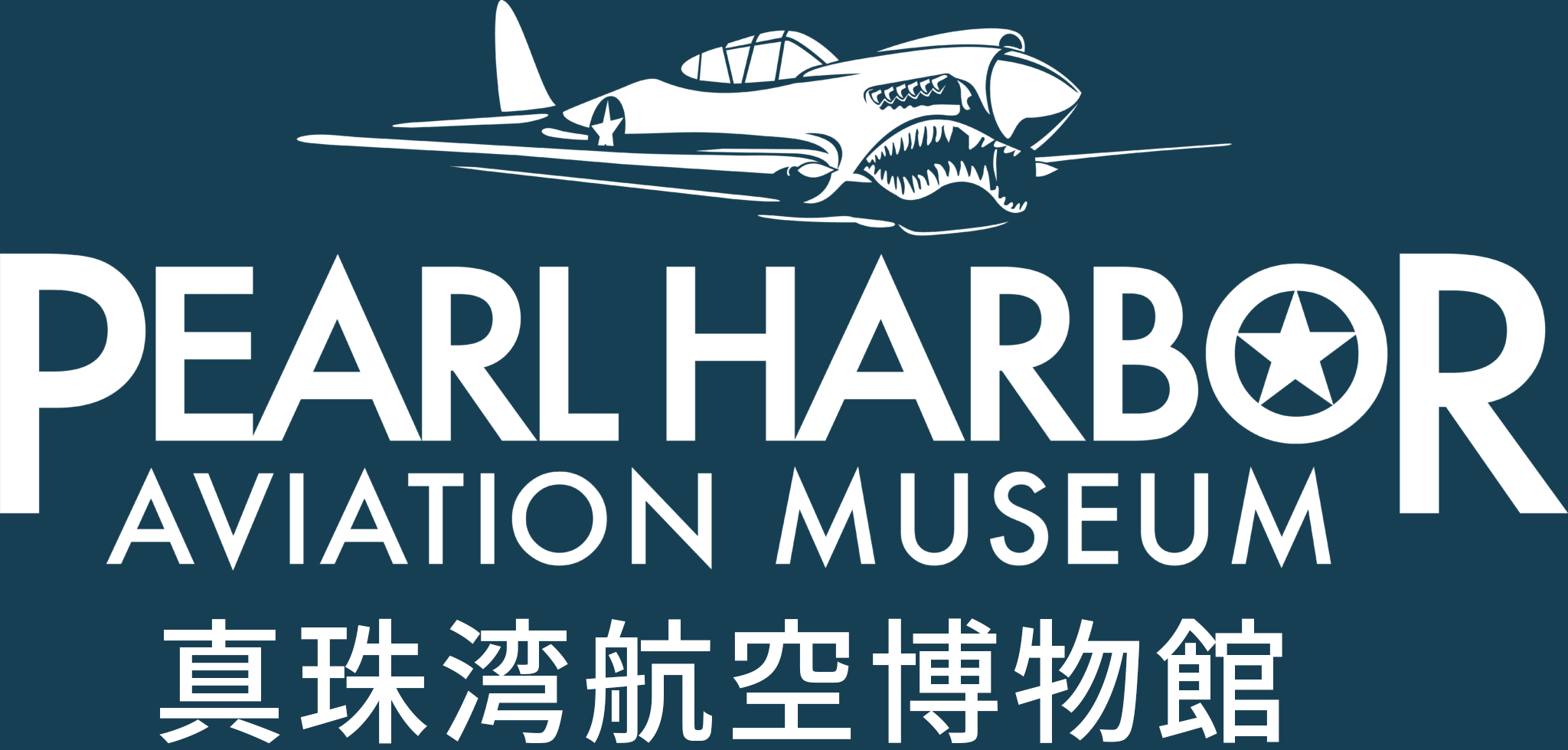In traditional torpedo/bombers, a pilot, an observer, and a gunner/radio operator sat behind each other. At first glance, the Grumman TBF/TBM Avenger torpedo/bomber looks like it has the same seating plan. There is a pilot, a long canopy, and then a gun position. Yet World War II Avenger photographs rarely show someone in the middle seat. Where did the third crew member sit?
The Curious Case of Seating in the Grumman TBF/TBM Avenger
Posted on December 20, 2017
By Ray Panko | [email protected] | Pearl Harbor Aviation Museum
Figure 1 shows the crew in a Nakajima Type 97 Attack Aircraft (torpedo/bomber). In the front sat the pilot. He flew the plane and conducted torpedo attacks. In the back, the gunner had a 7.7 mm flexible machine gun for defense. He was also the radio operator, working in Morse code. In the middle was the Teisatsu [Panko]. He was the observer on missions in which the plane directed fire from ships. He was the bombardier on missions to drop bombs from high level. He was also the navigator and had other important functions. If he was the senior officer, he was even the aircraft commander. The next two figures show the comparable seating arrangements in the Fairey Swordfish and the Douglas TBD Devastator torpedo/bombers. Pilot. Observer. Gunner. One behind the other like ducks.
Figure 1: Traditional Torpedo/Bomber Seating Arrangement in a Nakajima B5N2 Type 97 Attack Bomber

Source: Photograph by Ray Panko of an exhibit at the World War II Valor in the Pacific Museum Monument, in Pearl Harbor, Hawaii.
Figure 2: Traditional Seating Arrangement in a Fairey Swordfish Torpedo/Bomber
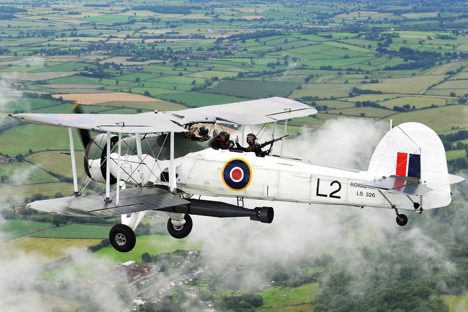
Photo: LA(PHOT) Abbie Herron/MOD, Military Defense Imagery, in Wikipedia. https://commons.wikimedia.org/wiki/File:Swordfish_Aircraft_MOD_45155479.jpg. Open Government License.
Figure 3: Seating in a Douglas TBD Devastator Torpedo/Bomber
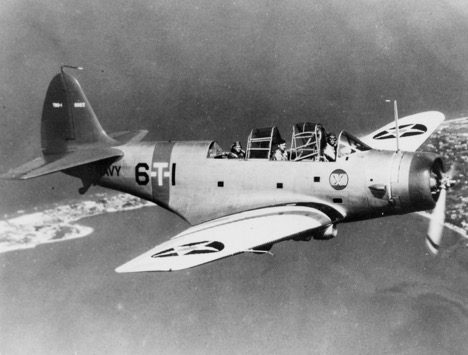
Source: U.S. Navy National Museum of Naval Aviation photo No. 1996.253.997. In Wikipedia, https://commons.wikimedia.org/wiki/File:Douglas_TBD-1_VT-6_in_flight_c1938.jpeg.
Seating in the Avenger
If you see a World War II photo of a Grumman TBF Avenger (TBM when built by General Motors), it seems at first glance like the seating arrangement is the same. There is a long glass canopy with obvious room for a seat behind the pilot. However, if you look closer, you see that there is rarely anybody behind the pilot. Yet the TBF/TBM had a crew of three [Bureau of Aeronautics]. Where is the Avenger’s third crew member?
Figure 4: Avengers in Flight with Nobody in the Middle Seat (1943)

Source: Navy Photograph from ww2db.com. https://ww2db.com/image.php?image_id=22511.
Figure 5 solves the “mystery.” The figure shows the pilot in the front as usual. Behind him was an armored bulkhead that cut his seat off from the rest of the aircraft. Except in the first model, the pilot had two forward-firing machine guns in the wings. He used these heavy machine guns to suppress antiaircraft fire from targets and to fire at incoming fighters.
Figure 5: Crew Seating Positions in the Grumman TBF/TBM Avenger
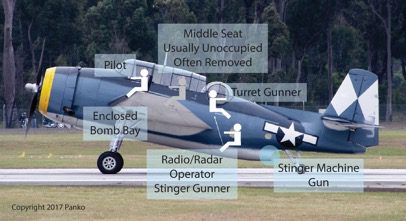
Source: Annotations by Ray Panko, aircraft photo was a royalty free stock photo from Adobe.
At the back of the canopy was the turret gunner. In the Avenger, the gunner was not also the radio operator. He was kept busy in his powered turret with a .50-caliber machine gun. He had a pistol grip that both moved the aim of the machine gun and fired it. He even had a reflective gun sight to lead his target. The third member of the crew was the “radio operator.” Note that he sat at the bottom of the fuselage, not up under the canopy.
We will look at the radio operator’s jobs in a moment. For now, we wish to continue the focus on crew positions. Figure 6 illustrates the three crew positions in more detail. Note the awkward way in which the turret gunner had to climb up from below to get into position. Getting out of the turret was just as awkward. Neither crew member in the back could wear his parachute in normal operation [Thomas undated]. If the plane was in trouble, both had to climb out the entry door after putting on their parachutes. The turret gunner also needed the time to climb down into the lower area before putting on his parachute. All too often, the pilot was the only crew member to be able to survive a bailout.
Figure 6: Crew Positions TBF/TBM Avenger
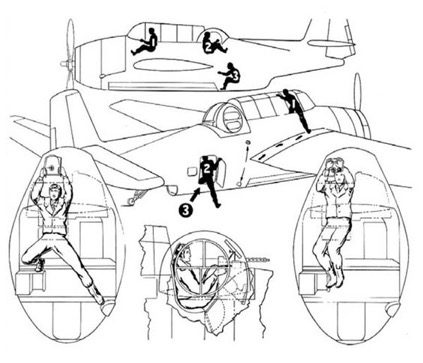
Source: Bureau of Aeronautics.
The “Radio Operator”
Officially, the third crew member was the radio operator. Instead of sitting under the canopy, he sat in the crew compartment that ran from floor to ceiling behind the bomb bay. Crew members called this space the tunnel. They also called it the “cheap seats” [Chance 40]. It was noisy, smelly, and claustrophobic, and the radio operator was only connected to the pilot by an electrical intercom [Chance 40]. If that connection broke, the radio operator was cut off [Chance 40]. In front of the radio operator were several panels [Chance] for the radio, radar, navigation, and weapons arming. On many missions, the radio operator used the radar to direct the pilot to targets [Chance]. The radio operator basically ran a rudimentary combat information center [Chance 40].
For level bombing, the third crew member had a Norden bombsight. He could take over the aircraft for the attack. This required a view forward and down. When the bomb bay doors opened, this vantage point was provided by a glass window with an unrestricted view if bombs were not directly in the center of the bay.
Figure 8: Sideways view of the Radio Operator’s Forward Viewing Window
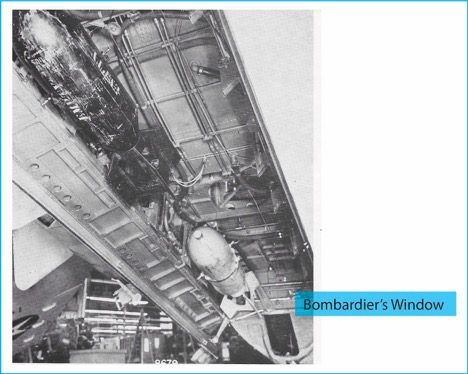
However, level bombing was rare. At sea, high-level bombing nearly always missed maneuvering ships. Consequently, the Avenger was normally used as a glide bomber [Tillman 53]. In glide bombing, the pilot aimed the aircraft and released the bombs. The radio operator’s jobs were to arm the weapons, set drop interval between bombs with an intervalometer, and called out altitudes during the dive [Thomas 2011 3548-3546, Tillman 51]. In torpedo attacks, he also advised the pilot about altitude and distance to the target [Thomas 2011, various]. Glide bombing was similar to dive bombing, only not as vertical.
Figure 7: Glide Bombing Attack
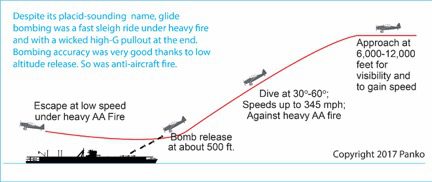
Even when high-level attacks were made against land targets, it was typical to only use real bombardier in the lead aircraft. When the lead aircraft released its bombs, so did every other Avenger in the raid [Thomas 2011 3546]. Level bombing was often used with land targets because few merited risky glide bombing. However, quite a few did, such as enemy airfields. These had to be hit with glide-bombing attacks.
Figure 10: USS ESSEX based TBMs and SB2Cs on Level Bombing Attack, Hokadate, Japan
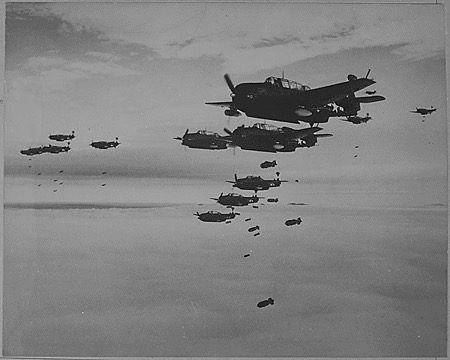
Source: National Archives Identifier 520989.
The radio operator also had a defensive role. If an Avenger was attacked from the rear, he turned around and manned the .30-caliber “stinger” machine gun at the back of the crew compartment. Compared to the .50-caliber machine gun in the powered turret, this was weak protection, but it could at least threaten fighters approaching from the back and below.
Figure 9: Radio Operator’s Stinger Machine Gun

Source: United States Navy from ww2db.com.
Near the end of the war, when the U.S. Navy was pounding heavily defended land targets, deaths among radio operators soared [Thomas 2011 3548-3546]. There was no armor in the bottom of the tunnel as there was around the seats of the pilot and turret gunner, and of course, AA hit from below. By this point, it seemed better to add to the pilot’s workload and have him do the radio operator’s job as well as his own even in glide bombing. In high level bombing, most Avengers had no need for the radio operator to use the Norden bombsight as the bombardier. Normally, Avengers doing level bombing had to fly in large gaggles, with a single lead plane containing the bombardier. All the pilots of the other planes simply dropped their bombs on cue when the lead plane released its payload. Many squadrons dropped the radio operator from their crews late in the war [Thomas 2011 3548-3546].
Remaining Questions
The information we have seen is all that is necessary to understand basic crew organization and seating. However, it leaves an obvious question unanswered. “Why was there a second seat in the cockpit at all?” A limited answer would be that there usually wasn’t even a seat behind the pilot in later models of the Avenger. It was taken out in later models to make more room for radio equipment. Eden and Moeng present a cutaway view of an Avenger beyond the first model. It shows no seat in the middle, and it shows a lot of radio gear that would be difficult for a human to share space with. Of course, the Avengers you see in air shows today usually do have a middle seat, but this was an after-war addition. The figure below, from the Pilot’s Flight Operating Instructions (Bureau of Aeronautics), shows how crowded the middle canopy area was with communications equipment by 1945. For in-flight maintenance, the radio operator or turret gunner could climb into the middle compartment from the rear. Production history can shed more light on the middle seat’s evolution. In the first production models of the TBF-1, there was indeed a second seat and rudimentary controls [Scrivner 7]. However, after the first 50, the controls were taken out. (The British TBF-2 decided to keep the controls in their model, the TBF-2 [Scrivner 7].) The actual removal of the seat and the use of the area for more radio gear took place with the TBF/TBM-1C [Rikard], which reached squadron service in late 1943 [Scrivner 16].
Figure 11: Communications Equipment in the Middle Canopy Area
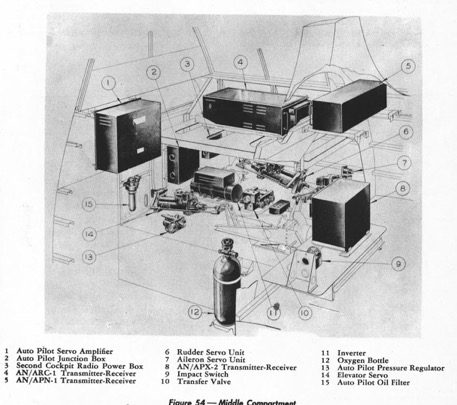
Source: Bureau of Aeronautics.
Sometimes, missions undoubtedly did put someone behind the pilot. For example, in observation missions to direct Army and Marine artillery fire (but not for naval gunfire), there was always an observation officer from that service aboard [Suerstedt]. It seems likely that he was behind the pilot, but I have found no clear evidence of this. In turn, on photographic reconnaissance missions, the photographer “squeezed in” behind the pilot. However, this did not necessarily mean that he had a seat. The caption for Figure 12 specifically states that Lt. Kerlee stood for four hours in the mission, hoisting his two big K-20 cameras when he reached Wake for the picture-taking part of the mission. It does not look like he enjoyed the mission.
So why was there an elongated “greenhouse” atop the fuselage if there was no one in the middle? Streamlining. Two separate canopies front and back would have disrupted air flow.
Figure 12: Photographer Climbing Down from the Wing

Source: National Archives and Records Administration Photo 80-G-43860.
Of course, this doesn’t explain why there was a middle seat in the first place. This article cannot address that central question. Opinions have been expressed on the Internet, but none that I have found so far is documented. Some insight may come from a USN publicity photo for the prototype. As Figure 13 shows, the photo shows a crew of four, with someone about to climb into the middle seat. The red dot in the middle of the star was removed in May 1942, so this was a very early model. The picture suggests that the airplane may have been intended to have a crew of four but that this was later changed. I hope to amend this blog post in the future with more definitive information.
Figure 13: Publicity Photograph Showing a Crew of Four
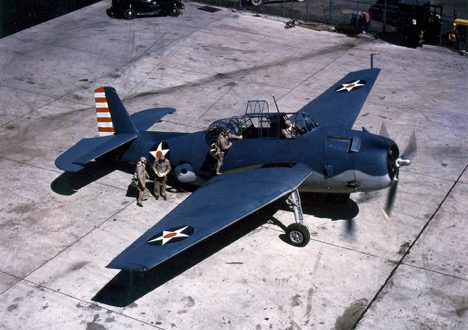
Source: United States Navy, from Wikipedia. https://commons.wikimedia.org/wiki/File:TBF_early1942.jpg.
References
Bureau of Aeronautics, Army Air Forces, Pilot’s Flight Operating Instructions, Grumman Avenger, 1945.
Chance, William B., “The Cheap Seats,” pp. 40-41 in Barrett Tillman, Avenger at War, Naval Institute Press, 1979.
Eden, Paul E. and Moeng, Soph (Eds.) Aircraft Anatomies of World War II: Technical Drawings of Key Aircraft 1939-1945.
Panko, Ray. Nakajima B5N2 “Kate” Type 97-3 Carrier Attack Aircraft at Pearl Harbor, Pearl Harbor Aviation Museum, 2017. https://jp.pearlharboraviationmuseum.org/pearl-harbor-blog/nakajima-b5n2/.
Rikard, J. Grumman TBF-1 Avenger, August 18, 2010. http://www.historyofwar.com/articles/weapons_grumman_TBF-1_Avenger.html. No longer online. Last viewed June 1, 2014.
Scrivner, Charles L., TBM/TBF Avenger in Action, Aircraft Number 82, Carrollton, TX: 1Squadron/Signals Publications, 1987.
Suerstedt, Hank, “Flying the Avenger,” pp. 34-37 in Barrett Tillman, Avenger at War, Naval Institute Press, 1979.
Thomas, Gerald, A Tribute to Avenger Air Crewmen, undated. http://www.airgroup4.com/crewmen.htm. Last viewed December 13, 2017.
Thomas, Gearald W., Torpedo Squadron Four: A Cockpit View of World War II, Doc45 Publications; Second, Revised Edition, May 20, 2011.
Tillman, Barrett, Avenger at War, Annapolis: Naval Institute Press, 1979.
